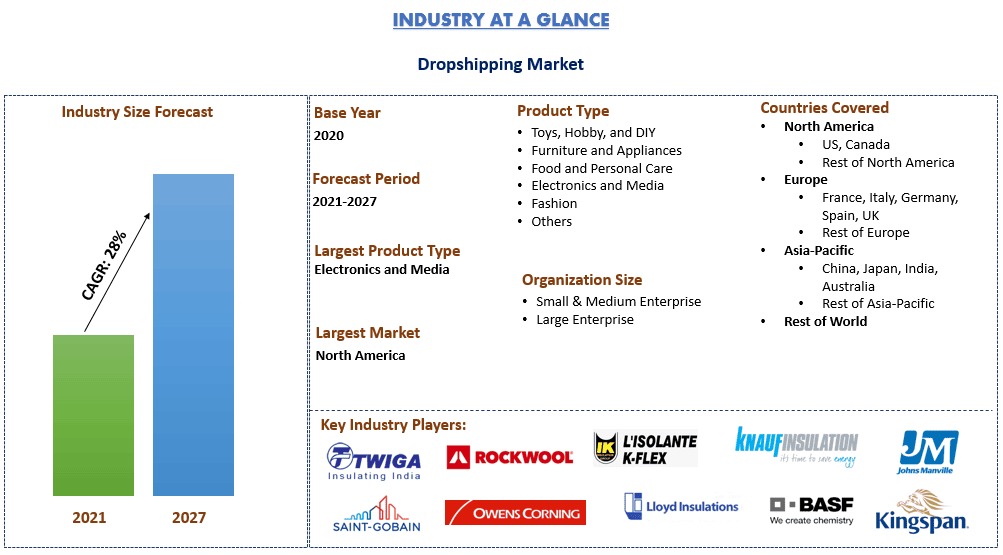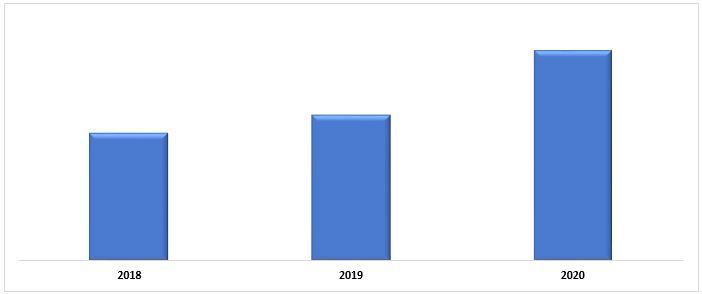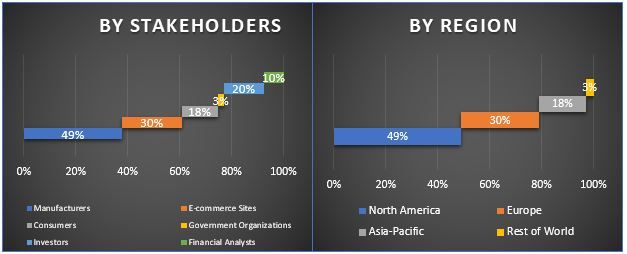Дропшиппинг: текущий анализ рынка и прогноз (2021-2027)
Акцент на типе продукта (Игрушки, Хобби и Сделай сам, Мебель и Бытовая техника, Продукты питания и личная гигиена, Электроника и СМИ, Мода, Другое); Размер организации (Малые и средние предприятия, Крупные предприятия); и Регион и Страна.
Рынок дропшиппинга – текущий сценарий и прогноз (2021-2027 гг.)

Ожидается, что к 2027 году рыночная стоимость рынка дропшиппинга превысит XX миллиардов долларов США и будет расти со значительным среднегодовым темпом роста в 28% в течение прогнозируемого периода (2021-2027 гг.). Дропшиппинг – это метод розничной реализации, при котором продавец не хранит свои товары на складе, а вместо этого, когда получает заказ, покупает товар у третьего лица и отправляет его непосредственно покупателю. Таким образом, затраты на обработку продукции сводятся к минимуму. Самым большим отличием между дропшиппингом и розничным методом является то, что при дропшиппинге продавец не хранит и не владеет какими-либо запасами. Дропшиппинг внедрен в различные отрасли, от электроники, игрушек, средств личной гигиены, моды, и обеспечивает бесперебойную доставку товаров потребителям. Передовые технологии электронной коммерции позволили модели дропшиппинга работать и предоставили ей хорошие возможности.
Бизнес-модель дропшиппинга особенно развивается в странах Азиатско-Тихоокеанского региона, включая Индию и Китай. Это экономически эффективная модель для предпринимателей, которая помогает начать бизнес в сфере электронной коммерции. Кроме того, учитывая пандемию, когда все были заперты дома, было разработано множество платформ электронной коммерции, которые стали популярными, поскольку у потребителей не было другого выбора. Это повысило популярность электронной коммерции и дополнительно привязало людей к этим онлайн-платформам. Согласно данным цифровой коммерции, рынок электронной коммерции в Соединенных Штатах вырос на 44% в 2020 году, при этом потребители потратили 861,12 миллиарда долларов США. Это в три раза больше, чем в 2019 году, когда рост составил около 15%.
Рост розничной торговли через электронную коммерцию за последние годы в Соединенных Штатах, (млрд долларов США), 2018-2020 гг.

BASF SE, Johns Manville, Kingspan Group Plc, Knauf Insulation GmbH, Lloyd Insulations, L’isolante K-Flex s.p.a, Owens Corning Corporation, Rockwool International A/S, Saint Gobain S.A. и U.P. Twiga Fiberglass Limited — вот некоторые из известных игроков, работающих на рынке дропшиппинга. Эти игроки предприняли несколько слияний и поглощений, а также партнерств, чтобы предоставить клиентам высокотехнологичные и инновационные продукты/технологии.
Аналитические выводы, представленные в отчете
«Среди типов продукции основная доля приходится на сегмент электроники и средств массовой информации»
На основе типа продукции рынок дропшиппинга сегментирован на игрушки, хобби и товары для дома, мебель и бытовую технику, продукты питания и средства личной гигиены, электронику и средства массовой информации, моду и другие. Среди типов продукции сегмент электроники и средств массовой информации рынка дропшиппинга оценивался в XX миллиардов долларов США в 2020 году и, вероятно, достигнет XX миллиардов долларов США к 2027 году, увеличиваясь со среднегодовым темпом роста в XX% в период с 2021 по 2027 год. С помощью электронной коммерции потребители могут сравнивать различные электронные продукты онлайн и просматривать все преимущества и недостатки этих продуктов, кроме того, клиенты также могут применять скидки на эти продукты и требовать легкий обмен и возврат при необходимости. Благодаря прямому взаимодействию производителя с клиентом клиенты знают, что получают лучшую цену на свою продукцию.
«Среди размеров организаций основная доля приходится на сегмент малых и средних предприятий»
На основе размера организации рынок дропшиппинга сегментирован на малые и средние предприятия и крупные предприятия. Среди размеров организаций на сегмент малых и средних предприятий приходилась рыночная стоимость в XX миллиардов долларов США в 2020 году, и ожидается, что к 2027 году она достигнет XX миллиардов долларов США, при среднегодовом темпе роста в XX% за анализируемый период. Это связано с тем, что малые и средние предприятия могут получать высокий доход за счет дропшиппинга. Использование платформы электронной коммерции стремительно растет во всем мире, предоставляя малым и средним отраслям платформу для расширения своего бизнеса. Согласно данным Бюро переписи населения Министерства торговли, рынок электронной коммерции в Соединенных Штатах вырос на 2,4% с первого квартала до 160,3 миллиарда долларов США к четвертому кварталу 2019 года.
«Северная Америка представляет собой один из крупнейших рынков рынка дропшиппинга»
Для лучшего понимания динамики рынка дропшиппинга был проведен детальный анализ для различных регионов по всему миру, включая Северную Америку (США, Канаду и остальную часть Северной Америки), Европу (Германию, Францию, Италию, Великобританию, Испанию и остальную часть Европы), Азиатско-Тихоокеанский регион (Китай, Японию, Индию, Австралию и остальную часть Азиатско-Тихоокеанского региона) и остальной мир. Северная Америка доминировала на рынке и захватила около XX% доли рынка из-за пандемической блокировки.
Причины купить этот отчет:
- Исследование включает анализ размеров рынка и прогнозирование, подтвержденный проверенными ключевыми экспертами отрасли
- Отчет представляет собой краткий обзор общих показателей отрасли с первого взгляда
- Отчет охватывает углубленный анализ выдающихся отраслевых аналогов с основным упором на ключевые финансовые показатели бизнеса, портфель продуктов, стратегии расширения и последние разработки
- Подробное изучение движущих сил, ограничений, ключевых тенденций и возможностей, преобладающих в отрасли
- Исследование всесторонне охватывает рынок по различным сегментам
- Углубленный анализ отрасли на региональном уровне
Варианты настройки:
Рынок дропшиппинга может быть дополнительно настроен в соответствии с требованиями или любым другим сегментом рынка. Кроме того, UMI понимает, что у вас могут быть свои собственные бизнес-потребности, поэтому не стесняйтесь связаться с нами, чтобы получить отчет, который полностью соответствует вашим требованиям.
Содержание
Методология исследования анализа рынка дропшиппинга (2021-2027 гг.)
Анализ исторического рынка, оценка текущего рынка и прогнозирование будущего рынка дропшиппинга были тремя основными шагами, предпринятыми для создания и анализа внедрения дропшиппинга в основных регионах мира. Было проведено исчерпывающее вторичное исследование для сбора исторических рыночных данных и оценки текущего размера рынка. Во-вторых, для подтверждения этих выводов было принято во внимание множество результатов и предположений. Кроме того, были проведены исчерпывающие первичные интервью с экспертами отрасли по всей цепочке создания стоимости рынка дропшиппинга. После предположения и подтверждения рыночных данных посредством первичных интервью мы применили нисходящий/восходящий подход к прогнозированию общего размера рынка. После этого были приняты методы разбивки рынка и триангуляции данных для оценки и анализа размера рынка сегментов и подсегментов, к которым относится отрасль. Подробная методология описана ниже:
Анализ исторического размера рынка
Шаг 1: Углубленное изучение вторичных источников:
Было проведено подробное вторичное исследование для получения исторических данных о размере рынка дропшиппинга из внутренних источников компании, таких как годовые отчеты и финансовые отчеты, презентации эффективности, пресс-релизы и т. д., и внешних источников, включая журналы, новости и статьи, правительственные публикации, публикации конкурентов, отраслевые отчеты, сторонние базы данных и другие надежные публикации.
Шаг 2: Сегментация рынка:
После получения исторических данных о размере рынка дропшиппинга мы провели подробный вторичный анализ для сбора исторических рыночных данных и доли для различных сегментов и подсегментов в основных регионах. Основные сегменты, включенные в отчет, - это тип продукта и размер организации. Был проведен дальнейший анализ на уровне страны для оценки общего внедрения дропшиппинга в этом регионе.
Шаг 3: Факторный анализ:
После получения исторических данных о размере рынка различных сегментов и подсегментов мы провели подробный факторный анализ для оценки текущего размера рынка дропшиппинга. Кроме того, мы провели факторный анализ с использованием зависимых и независимых переменных, таких как расширение использования электронной коммерции населением и необходимость перехода на электронную коммерцию из-за пандемии. Был проведен тщательный анализ сценариев спроса и предложения с учетом ведущих партнерств, слияний и поглощений, расширения бизнеса и запуска продуктов в секторе дропшиппинга по всему миру.
Оценка и прогноз текущего размера рынка
Определение текущего размера рынка: Основываясь на практически применимых выводах, полученных на основе вышеуказанных 3 шагов, мы определили текущий размер рынка, ключевых игроков на рынке дропшиппинга и доли рынка сегментов. Все необходимые процентные доли и разбивки рынка были определены с использованием вышеупомянутого вторичного подхода и проверены посредством первичных интервью.
Оценка и прогнозирование: Для оценки рынка и прогнозирования были присвоены веса различным факторам, включая движущие силы и тенденции, ограничения и возможности, доступные для заинтересованных сторон. После анализа этих факторов были применены соответствующие методы прогнозирования, т. е. нисходящий/восходящий подход, чтобы получить рыночный прогноз примерно на 2027 год для различных сегментов и подсегментов на основных рынках по всему миру. Методология исследования, принятая для оценки размера рынка, включает в себя:
- Размер рынка отрасли в стоимостном выражении (доллары США) и темпы внедрения дропшиппинга на основных рынках внутри страны
- Все процентные доли, разбивки и деления рыночных сегментов и подсегментов
- Ключевые игроки на рынке дропшиппинга с точки зрения предлагаемых продуктов. Кроме того, стратегии роста, принятые этими игроками для конкуренции на быстрорастущем рынке
Подтверждение размера рынка и доли
Первичное исследование: Были проведены углубленные интервью с ключевыми лидерами мнений (KOL), включая руководителей высшего звена (CXO/вице-президенты, руководители отдела продаж, руководители отдела маркетинга, руководители операционного отдела и региональные руководители, руководители стран и т. д.) в основных регионах. Затем результаты первичных исследований были обобщены и проведен статистический анализ для подтверждения заявленной гипотезы. Данные, полученные в результате первичных исследований, были объединены с результатами вторичных исследований, что позволило преобразовать информацию в практически применимые выводы.
Разделение первичных участников по различным регионам

Инжиниринг рынка
Для завершения общей оценки рынка и получения точных статистических данных по каждому сегменту и подсегменту рынка дропшиппинга была применена техника триангуляции данных. Данные были разделены на несколько сегментов и подсегментов после изучения различных параметров и тенденций в областях типа и их типа рынка дропшиппинга.
Основная цель исследования рынка дропшиппинга
В исследовании были точно определены текущие и будущие рыночные тенденции дропшиппинга. Инвесторы могут получить стратегическое понимание для обоснования своих решений для инвестиций на основе качественного и количественного анализа, выполненного в исследовании. Текущие и будущие рыночные тенденции определили общую привлекательность рынка на региональном уровне, предоставив промышленному участнику платформу для использования неиспользованного рынка для получения выгоды в качестве преимущества первопроходца. Другие количественные цели исследований включают в себя:
- Проанализировать текущий и прогнозируемый размер рынка дропшиппинга в стоимостном выражении (доллары США). Кроме того, проанализировать текущий и прогнозируемый размер рынка различных сегментов и подсегментов
- Сегменты в исследовании включают области типа и их подтипы
- Определение и анализ нормативно-правовой базы для индустрии дропшиппинга
- Проанализировать цепочку создания стоимости, связанную с присутствием различных посредников, а также проанализировать поведение клиентов и конкурентов в отрасли
- Проанализировать текущий и прогнозируемый размер рынка дропшиппинга для основного региона
- Основные регионы, изученные в отчете, включают Северную Америку (США, Канада и остальная часть Северной Америки), Европу (Германия, Великобритания, Франция, Испания, Италия и остальная часть Европы), Азиатско-Тихоокеанский регион (Китай, Япония, Индия, Австралия и другие) и остальной мир
- Профили компаний рынка дропшиппинга и стратегии роста, принятые участниками рынка для поддержания устойчивости на быстрорастущем рынке
- Углубленный анализ отрасли на региональном уровне
Связанные Отчеты
Клиенты, купившие этот товар, также купили










